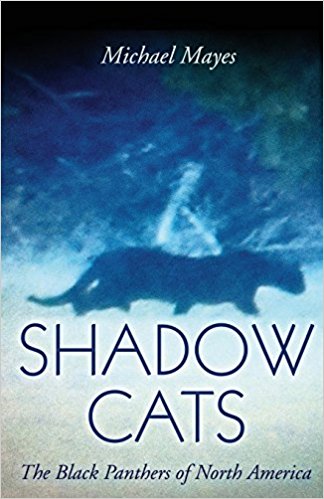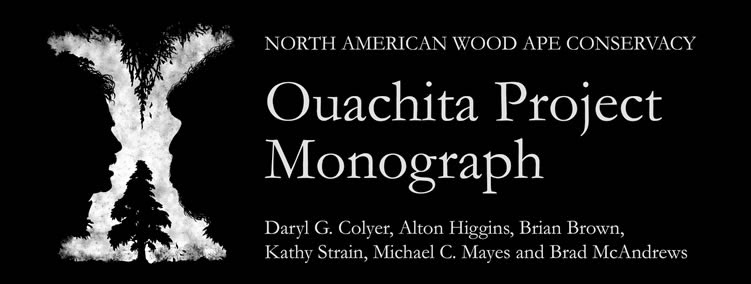
I recently ran across an interesting article on the BBC website that really caught my attention. The author, Matt Walker, gives us a look into some pretty amazing behaviors being exhibited by wild chimpanzees in Guinea. Read the full article
here.
It is pretty commonly known that chimpanzees, as well as other great ape, are facing increased pressure from poachers due to the high demand for "bush meat" in parts of Africa. Snare traps are the most commonly used tool to capture the targeted species and it seems chimpanzees are beginning to recognize this technique and are fighting back the best way they know how.
Primatologist Gaku Ohashi and Professor Tetsuro Matsuzawa observed wild chimpanzees disabling snares traps. The discovery was made by accident as the team was following a group of the apes living in the jungles near Bossou, Guinea to observe their social structure and behaviors. More incredible still is that the chimps seemed to be actively seeking out the snares with the express purpose of disabling them.

According to the article, snare injuries to chimpanzees are common at many sites across East and West Africa; however, that is not the case with the chimps being observed in the Bossou region. This was deemed very curious as these chimpanzees live near human settlements where poachers are abundant. Now, it seems, we know why. Ohashi and Matsuzawa of the
Primate Research Institute of Kyoto University, Japan, observed five male chimps, both juvenile and adult, attempting to break or deactivate snares. Twice the chimps were successful in ruining the traps set for them.

It may be helpful to understand how these snare traps work. According to the article, a typical snare consists of a loop of iron wire connected by a vine rope to an arched stick, often a sapling. The sapling puts tension on the rope and once an animal passes through the wire loop the trap springs, the sapling straightens, and the wire tightens around the leg or neck of the animal. The snares are indiscriminate killers, catching and killing whatever species come into contact with them. The male chimpanzees of Bossou seem to be working on getting rid of these traps themselves.
"They seemed to know which parts of the snares are dangerous and which are not," Ohashi said. In an article for the journal
Primates, the researchers recounted six different instances where male chimps were observed trying to deactivate snares. Most of the time, the chimps grabbed the sapling and simply shook it until the trap broke. In each case, the apes avoided touching the dangerous wire loop.
The observations of these primatologists bring up an interesting question. How did the chimps learn to deactivate these traps? It has long been assumed that chimpanzees learn by trial and error. This doesn't seem to fit here; however, as an error would likely prove to be fatal. The observations suggest these great apes are capable of learning by observing events.
"The observations indicate that chimpanzees can learn some manners without trial and error," said Ohashi.
In addition, the behaviors learned are being passed down to younger chimpanzees. The researchers watched as an older male deactivated a snare while a juvenile male watched intently from a safe distance.

Snares continue to pose a major threat to great apes in Africa as chimps in other regions have not yet figured out how to deactivate traps set for them by poachers. Why this particular group is so far ahead of the curve is subject to speculation.
As always, whenever a discovery that reveals the exceptional intelligence level and/or problem-solving abilities of a known great ape species is made I ponder how it might possibly relate to the quest to document the sasquatch. If the sasquatch is at least as intelligent as the known great apes, but fewer in number, the challenge facing us becomes obvious. Are sasquatches intentionally avoiding and/or disabling the North American version of an ape trap? I am, of course, speaking of game cameras.
A long-standing point of contention among researchers is whether or not game cameras, or camera traps, have a realistic chance of documenting this elusive species. Some believe that sasquatches know what cameras are and what they do and so avoid them. I think that is complete malarkey. While I don't believe that the species has any idea what a camera does, what could be true is that sasquatches associate them with people, just as the chimpanzees of Guinea associate snares with poachers. If sasquatches have an aversion to humans, as I believe they do, then they would likely have an aversion to cameras set out by humans as well. While these camera "traps" are a far cry from the deadly snares of the African jungles, it is possible they put sasquatches on high alert. Again, I don't think these creatures have any idea what these cameras do but if they understand humans are responsible for the presence of these alien devices that may be all they need to know. If so, those of us who seek the "discovery photo" are going to have to start thinking more outside the box as far as how to best camouflage and hide these cameras.

Avoidance of the cameras would be the likeliest behavior but it isn't too far-fetched to think a sasquatch might attempt to disable one if it is perceived as a threat. I don't mean that they are going to steal batteries or memory cards, somehow knowing the function of the camera, to prevent discovery. Rather, I mean they might simply destroy the camera. There are many cases of game cameras going missing. Usually, and rightfully so, other humans are assumed to be responsible. This is certainly the correct explanation most of the time; however, there are instances when this just doesn't seem likely. Sometimes cameras in incredibly remote locales disappear. Could the sasquatch be responsible? Other times cameras are found smashed to bits. My experiences with the TBRC have shown me that black bears are most often responsible for these incidents. While this is a logical explanation in some places, Southeast Oklahoma, for example, it would be a bit more of a stretch in some other areas where bears are absent or very rare. Any animal will become aggressive if it feels threatened or if it's territory is infringed upon. Cameras could be seen as both a threat, due to their association with humans, and as an unwelcome interloper.
I do not want to sound like camera trapping is futile. To the contrary, I still feel it is the best chance, short of a hunter taking a specimen or a road-kill type scenario, that we have of documenting the species. I also feel, despite the challenges involved, the reason we don't have definitive photographic evidence already is due to the fact that there has not been a sufficiently large and well-funded attempt made to capture said evidence to date. I believe that sooner or later, we will get the photograph we seek. We may have to vary our techniques, locations, etc. as putting an uncamouflaged camera on a stake or tree may not be good enough to fool a creature as intelligent as a great ape. However, it just takes one animal making one mistake to give us what we need. Unlike the chimpanzees of Africa who, if they make a mistake, can lose their lives to a poacher's trap the sasquatch that eventually makes a mistake and is "trapped" via a camera may very well end up saving his/her entire species.
Let's hope that "mistake" happens soon.




































